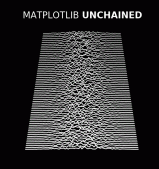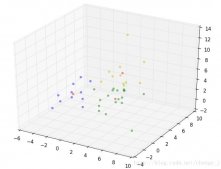單目標(biāo)跟蹤:
直接調(diào)用opencv中封裝的tracker即可。
|
1
2
3
4
5
6
7
8
9
10
11
12
13
14
15
16
17
18
19
20
21
22
23
24
25
26
27
28
29
30
31
32
33
34
35
36
37
38
39
40
41
42
43
44
45
46
47
48
49
50
51
52
53
54
55
56
57
58
59
60
61
62
63
64
65
66
67
68
69
70
71
72
73
74
75
76
77
78
79
80
81
82
83
84
85
86
87
88
89
90
91
92
93
94
95
96
97
98
99
100
101
102
103
104
105
106
107
108
109
110
111
112
113
114
115
116
117
118
119
120
121
122
123
124
125
126
127
128
129
130
131
132
133
134
135
136
137
138
139
140
141
|
#!/usr/bin/env python3# -*- coding: utf-8 -*-"""Created on Sun Jan 5 17:50:47 2020第四章 kcf跟蹤@author: youxinlin"""import cv2from items import MessageItemimport timeimport numpy as np'''監(jiān)視者模塊,負(fù)責(zé)入侵檢測,目標(biāo)跟蹤'''class WatchDog(object): #入侵檢測者模塊,用于入侵檢測 def __init__(self,frame=None): #運(yùn)動(dòng)檢測器構(gòu)造函數(shù) self._background = None if frame is not None: self._background = cv2.GaussianBlur(cv2.cvtColor(frame,cv2.COLOR_BGR2GRAY),(21,21),0) self.es = cv2.getStructuringElement(cv2.MORPH_ELLIPSE, (10, 10)) def isWorking(self): #運(yùn)動(dòng)檢測器是否工作 return self._background is not None def startWorking(self,frame): #運(yùn)動(dòng)檢測器開始工作 if frame is not None: self._background = cv2.GaussianBlur(cv2.cvtColor(frame, cv2.COLOR_BGR2GRAY), (21, 21), 0) def stopWorking(self): #運(yùn)動(dòng)檢測器結(jié)束工作 self._background = None def analyze(self,frame): #運(yùn)動(dòng)檢測 if frame is None or self._background is None: return sample_frame = cv2.GaussianBlur(cv2.cvtColor(frame,cv2.COLOR_BGR2GRAY),(21,21),0) diff = cv2.absdiff(self._background,sample_frame) diff = cv2.threshold(diff, 25, 255, cv2.THRESH_BINARY)[1] diff = cv2.dilate(diff, self.es, iterations=2) image, cnts, hierarchy = cv2.findContours(diff.copy(),cv2.RETR_EXTERNAL, cv2.CHAIN_APPROX_SIMPLE) coordinate = [] bigC = None bigMulti = 0 for c in cnts: if cv2.contourArea(c) < 1500: continue (x,y,w,h) = cv2.boundingRect(c) if w * h > bigMulti: bigMulti = w * h bigC = ((x,y),(x+w,y+h)) if bigC: cv2.rectangle(frame, bigC[0],bigC[1], (255,0,0), 2, 1) coordinate.append(bigC) message = {"coord":coordinate} message['msg'] = None return MessageItem(frame,message)class Tracker(object): ''' 追蹤者模塊,用于追蹤指定目標(biāo) ''' def __init__(self,tracker_type = "BOOSTING",draw_coord = True): ''' 初始化追蹤器種類 ''' #獲得opencv版本 (major_ver, minor_ver, subminor_ver) = (cv2.__version__).split('.') self.tracker_types = ['BOOSTING', 'MIL','KCF', 'TLD', 'MEDIANFLOW', 'GOTURN'] self.tracker_type = tracker_type self.isWorking = False self.draw_coord = draw_coord #構(gòu)造追蹤器 if int(minor_ver) < 3: self.tracker = cv2.Tracker_create(tracker_type) else: if tracker_type == 'BOOSTING': self.tracker = cv2.TrackerBoosting_create() if tracker_type == 'MIL': self.tracker = cv2.TrackerMIL_create() if tracker_type == 'KCF': self.tracker = cv2.TrackerKCF_create() if tracker_type == 'TLD': self.tracker = cv2.TrackerTLD_create() if tracker_type == 'MEDIANFLOW': self.tracker = cv2.TrackerMedianFlow_create() if tracker_type == 'GOTURN': self.tracker = cv2.TrackerGOTURN_create() def initWorking(self,frame,box): ''' 追蹤器工作初始化 frame:初始化追蹤畫面 box:追蹤的區(qū)域 ''' if not self.tracker: raise Exception("追蹤器未初始化") status = self.tracker.init(frame,box) if not status: raise Exception("追蹤器工作初始化失敗") self.coord = box self.isWorking = True def track(self,frame): ''' 開啟追蹤 ''' message = None if self.isWorking: status,self.coord = self.tracker.update(frame) if status: message = {"coord":[((int(self.coord[0]), int(self.coord[1])),(int(self.coord[0] + self.coord[2]), int(self.coord[1] + self.coord[3])))]} if self.draw_coord: p1 = (int(self.coord[0]), int(self.coord[1])) p2 = (int(self.coord[0] + self.coord[2]), int(self.coord[1] + self.coord[3])) cv2.rectangle(frame, p1, p2, (255,0,0), 2, 1) message['msg'] = "is tracking" return MessageItem(frame,message)class ObjectTracker(object): def __init__(self,dataSet): self.cascade = cv2.CascadeClassifier(dataSet) def track(self,frame): gray = cv2.cvtColor(frame,cv2.COLOR_BGR2GRAY) faces = self.cascade.detectMultiScale(gray,1.03,5) for (x,y,w,h) in faces: cv2.rectangle(frame,(x,y),(x+w,y+h),(0,0,255),2) return frameif __name__ == '__main__' :# tracker_types = ['BOOSTING', 'MIL','KCF', 'TLD', 'MEDIANFLOW', 'GOTURN'] tracker = Tracker(tracker_type="KCF")# video = cv2.VideoCapture(0)# video = cv2.VideoCapture("complex1.mov") video = cv2.VideoCapture(r"/Users/youxinlin/Desktop/video_data/complex1.MOV") ok, frame = video.read() bbox = cv2.selectROI(frame, False) tracker.initWorking(frame,bbox) while True: _,frame = video.read(); if(_): item = tracker.track(frame); cv2.imshow("track",item.getFrame()) k = cv2.waitKey(1) & 0xff if k == 27: break |
附帶items.py,放在同個(gè)文件夾下:
|
1
2
3
4
5
6
7
8
9
10
11
12
13
14
15
16
17
18
19
20
21
22
23
24
25
26
27
28
29
30
31
32
33
34
35
|
#!/usr/bin/env python3# -*- coding: utf-8 -*-"""Created on Sun Jan 5 17:51:04 2020@author: youxinlin"""import jsonfrom utils import IOUtil'''信息封裝類'''class MessageItem(object): #用于封裝信息的類,包含圖片和其他信息 def __init__(self,frame,message): self._frame = frame self._message = message def getFrame(self): #圖片信息 return self._frame def getMessage(self): #文字信息,json格式 return self._message def getBase64Frame(self): #返回base64格式的圖片,將BGR圖像轉(zhuǎn)化為RGB圖像 jepg = IOUtil.array_to_bytes(self._frame[...,::-1]) return IOUtil.bytes_to_base64(jepg) def getBase64FrameByte(self): #返回base64格式圖片的bytes return bytes(self.getBase64Frame()) def getJson(self): #獲得json數(shù)據(jù)格式 dicdata = {"frame":self.getBase64Frame().decode(),"message":self.getMessage()} return json.dumps(dicdata) def getBinaryFrame(self): return IOUtil.array_to_bytes(self._frame[...,::-1]) |
utils.py:也放在同一個(gè)文件夾下。
|
1
2
3
4
5
6
7
8
9
10
11
12
13
14
15
16
17
18
19
20
21
22
23
24
25
26
27
28
29
30
31
32
33
34
35
36
37
38
39
40
41
42
43
44
45
46
47
48
49
50
51
52
53
54
55
56
57
58
59
60
61
62
63
64
65
66
67
68
69
70
71
72
73
74
75
76
77
78
79
80
|
#!/usr/bin/env python3# -*- coding: utf-8 -*-"""Created on Sun Jan 5 17:51:40 2020@author: youxinlin"""import timeimport numpyimport base64import osimport loggingimport sysfrom PIL import Imagefrom io import BytesIO#工具類class IOUtil(object): #流操作工具類 @staticmethod def array_to_bytes(pic,formatter="jpeg",quality=70): ''' 靜態(tài)方法,將numpy數(shù)組轉(zhuǎn)化二進(jìn)制流 :param pic: numpy數(shù)組 :param format: 圖片格式 :param quality:壓縮比,壓縮比越高,產(chǎn)生的二進(jìn)制數(shù)據(jù)越短 :return: ''' stream = BytesIO() picture = Image.fromarray(pic) picture.save(stream,format=formatter,quality=quality) jepg = stream.getvalue() stream.close() return jepg @staticmethod def bytes_to_base64(byte): ''' 靜態(tài)方法,bytes轉(zhuǎn)base64編碼 :param byte: :return: ''' return base64.b64encode(byte) @staticmethod def transport_rgb(frame): ''' 將bgr圖像轉(zhuǎn)化為rgb圖像,或者將rgb圖像轉(zhuǎn)化為bgr圖像 ''' return frame[...,::-1] @staticmethod def byte_to_package(bytes,cmd,var=1): ''' 將每一幀的圖片流的二進(jìn)制數(shù)據(jù)進(jìn)行分包 :param byte: 二進(jìn)制文件 :param cmd:命令 :return: ''' head = [ver,len(byte),cmd] headPack = struct.pack("!3I", *head) senddata = headPack+byte return senddata @staticmethod def mkdir(filePath): ''' 創(chuàng)建文件夾 ''' if not os.path.exists(filePath): os.mkdir(filePath) @staticmethod def countCenter(box): ''' 計(jì)算一個(gè)矩形的中心 ''' return (int(abs(box[0][0] - box[1][0])*0.5) + box[0][0],int(abs(box[0][1] - box[1][1])*0.5) +box[0][1]) @staticmethod def countBox(center): ''' 根據(jù)兩個(gè)點(diǎn)計(jì)算出,x,y,c,r ''' return (center[0][0],center[0][1],center[1][0]-center[0][0],center[1][1]-center[0][1]) @staticmethod def getImageFileName(): return time.strftime("%Y_%m_%d_%H_%M_%S", time.localtime())+'.png' |
多目標(biāo)跟蹤:
和單目標(biāo)差不多,改用MultiTracker_create()
|
1
2
3
4
|
#!/usr/bin/env python3# -*- coding: utf-8 -*-"""Created on Sun Jan 5 18:02:33 2020 |
多目標(biāo)跟蹤
|
1
2
3
4
5
6
7
8
9
10
11
12
13
14
15
16
17
18
19
20
21
22
23
24
25
26
27
28
29
30
31
32
33
34
35
36
37
38
39
40
41
|
@author: youxinlin"""import numpy as npimport cv2import sys'''if len(sys.argv) != 2: print('Input video name is missing') exit()'''print('Select multiple tracking targets') cv2.namedWindow("tracking")camera = cv2.VideoCapture(r"/Users/youxinlin/Desktop/video_data/complex6.MOV") #camera = cv2.VideoCapture(0)tracker = cv2.MultiTracker_create() #多目標(biāo)跟蹤a= cv2.Tracker_cinit_once = Falseok, image=camera.read()if not ok: print('Failed to read video') exit()bbox1 = cv2.selectROI('tracking', image)bbox2 = cv2.selectROI('tracking', image)bbox3 = cv2.selectROI('tracking', image)while camera.isOpened(): ok, image=camera.read() if not ok: print ('no image to read') break if not init_once: ok = tracker.add(cv2.TrackerKCF_create(),image,bbox1) ok = tracker.add(cv2.TrackerKCF_create( ),image, bbox2) ok = tracker.add(cv2.TrackerKCF_create(),image, bbox3) init_once = True ok, boxes = tracker.update(image) for newbox in boxes: p1 = (int(newbox[0]), int(newbox[1])) p2 = (int(newbox[0] + newbox[2]), int(newbox[1] + newbox[3])) cv2.rectangle(image, p1, p2, (0,0,255)) cv2.imshow('tracking', image) k = cv2.waitKey(1) if k == 27 : break # esc pressed |
多尺度檢測的KCF、自定義所用特征的KCF
在一些場景下,不想使用默認(rèn)的hog特征跟蹤,或需要對比不同特征的跟蹤效果,那么封裝好的方法似乎不可用,需要可以自己擼一波kcf的代碼,從而使用自己設(shè)定的特征。
總結(jié)
以上所述是小編給大家介紹的python實(shí)現(xiàn)單目標(biāo)、多目標(biāo)、多尺度、自定義特征的KCF跟蹤算法,希望對大家有所幫助,如果大家有任何疑問請給我留言,小編會(huì)及時(shí)回復(fù)大家的。在此也非常感謝大家對服務(wù)器之家網(wǎng)站的支持!如果你覺得本文對你有幫助,歡迎轉(zhuǎn)載,煩請注明出處,謝謝!
原文鏈接:https://blog.csdn.net/lyxleft/article/details/103847454












